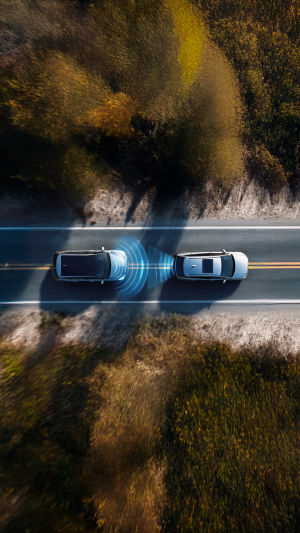Artificial Intelligence (AI) isn't just helping you park anymore—it's actively working behind the scenes to keep you alive.
If you've ever driven a newer car and heard a beep when someone was in your blind spot or felt your car gently steer you back into your lane, you've already met the new co-pilot: AI. But the most impressive part? We're only scratching the surface.
Let's explore how AI is reshaping automobile safety—not in the distant future, but right now, every time you hit the road.
<h3>AI-Powered Collision Detection Is Smarter Than You Think</h3>
You're cruising down the highway, and suddenly, the car in front slams the brakes. Older vehicles would rely on your reaction time. In contrast, AI-enabled systems like Automatic Emergency Braking (AEB) don't wait—they act.
These systems use a fusion of radar, camera, and LIDAR sensors to track surrounding traffic and detect the distance between your car and others in milliseconds. The AI then analyzes this data in real-time, predicts whether a collision is likely, and activates the brakes if needed—even before you react.
What's fascinating is how machine learning improves these systems. Over time, AI can recognize not just fast stops but also subtler threats, such as a pedestrian about to step into the street or a cyclist crossing ahead in the dark. Each time it encounters a new scenario, it adds to a growing neural database of what danger looks like.
<h3>Intelligent Driver Assistance: More Than Just Alerts</h3>
Driver Assistance Systems (ADAS) used to be simple. A light on your mirror, maybe a ding here and there. But now, AI goes much further, essentially acting as a second set of eyes—and often, a smarter brain.
Here are a few AI-driven features making cars safer:
<b>Lane-Keeping Assist:</b> This feature doesn't just warn you. It understands lane curvature, vehicle speed, and even weather conditions to gently steer the car back without overcorrecting.
<b>Adaptive Cruise Control (ACC):</b> Unlike traditional cruise control, ACC uses AI to maintain a safe following distance, slowing or accelerating based on real-time traffic.
<b>Driver Monitoring Systems:</b> Some AI systems watch you. Using cameras and face tracking, they detect if you're sleepy, distracted, or looking away from the road—and alert you or even stop the vehicle.
What makes this even more impactful is that AI doesn't treat all situations the same. For example, if you're driving at night in the rain, it adjusts its sensitivity to compensate for decreased visibility and road traction.
<h3>Predictive Maintenance: Fixing Problems Before They Happen</h3>
Most accidents don't start with reckless driving—they start with preventable mechanical failure. A worn-out brake pad, a misfiring sensor, or low tire pressure could all lead to disaster if left unchecked. This is where predictive maintenance, powered by AI, steps in.
AI systems now analyze vehicle data—such as engine heat, vibration, oil quality, or braking response—to anticipate failures before they occur. Instead of relying on fixed service intervals, AI alerts you exactly when something's off.
<b>For example:</b>
<b>Battery Life Monitoring:</b> Based on usage patterns and environmental data, AI can predict battery failure weeks in advance.
<b>Brake System Monitoring:</b> It tracks usage intensity, wear patterns, and thermal readings to know when your brakes are nearing their limit—long before squeaking starts.
<b>Tire Pressure & Wear:</b> With integrated sensors and AI pattern recognition, the car alerts you to uneven wear, hinting at alignment issues before they get serious.
The result? Fewer breakdowns, fewer surprises on the road, and a much safer driving experience.
<h3>Real-Time Decision Making in Autonomous Vehicles</h3>
While fully autonomous vehicles are still under testing in many places, semi-autonomous features in cars like Tesla, BMW, and Volvo already showcase AI's decision-making power.
AI not only sees the world through sensors but also makes ethical, context-driven decisions:
• If a child runs into the street and another car is approaching in the opposite lane, what's the safest evasive maneuver?
• If visibility drops to near zero in fog, how should the vehicle adapt its speed and following distance?
These aren't simple calculations—they're nuanced decisions made in real time, based on billions of miles of past data. That's AI functioning like a trained driver, not just a machine.
<h3>The Road Ahead: Challenges and Opportunities</h3>
Despite the promise, AI-driven safety is not without flaws. Sensor blind spots, unpredictable human drivers, and data privacy concerns still exist. Moreover, over-reliance on AI can make some drivers complacent—trusting automation too much and disengaging from their responsibilities.
That said, the numbers don't lie: The National Highway Traffic Safety Administration (NHTSA) reports that advanced driver-assistance systems reduce rear-end collisions by up to 50%.
And with continual updates over-the-air, just like smartphones, cars are getting smarter and safer after purchase—an innovation we never had before.
<h3>Are You Driving With or Without AI?</h3>
Next time you get behind the wheel, ask yourself: Is your car helping you drive smarter, or are you still relying 100% on your own instincts?
The difference could be life-saving.
Whether you're buying your first car or upgrading, understanding how AI contributes to safety is no longer optional—it's essential. Look beyond horsepower and leather seats. Ask about lane assist. Test the emergency braking. Check if predictive diagnostics are available.
You don't need a self-driving car to benefit from AI. You just need a car that's smart enough to help you drive safer.
Are you ready to share the wheel with AI? Or are you still holding the past in your hands?





